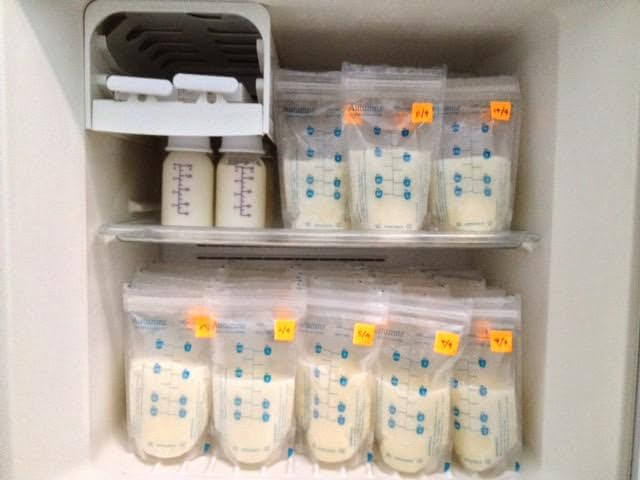3 Breastfeeding Challenges to Overcome

There are many breastfeeding challenges that are difficult to overcome. Not everything is rosy at this stage, even though we can agree that it’s a wonderful time. A woman’s body is prepared to face most of motherhood‘s challenges, but sometimes it is pushed to its limit.
Because breastfeeding is the natural way to feed your baby, it’s not something that is easily avoided. However, sometimes certain challenges arise, causing the mother to prematurely abandon breastfeeding.
Breastfeeding is a skill that is not only innate, but also learned with practice. We don’t really know how our body will react, and problems can occur.
It is known that the mother may suffer certain setbacks while breastfeeding. However, all obstacles must be overcome in order to continue feeding the baby. Here’s a list of the most common breastfeeding challenges.
Breastfeeding Challenges to Overcome
Low milk production

Low milk production is a fairly common problem. Although the body has months to prepare for lactation, when the time comes, it isn’t possible to produce the desired amount of milk. It’s important to overcome this obstacle quickly, or the baby may suffer nutritional deficiencies.
To increase milk production, it’s necessary to adjust to the baby’s demands. You may not be feeding the baby often enough. It is understood that the body knows how to produce more milk when the breasts are empty.
When a breast pump is used, the breast is not completely empty. Therefore, the best way to stimulate milk production is to breastfeed the baby more often. Sometimes, much more needs to be done, such as taking nutritional supplements.
Between the first three and six weeks postpartum, your body will be adjusting to the baby’s needs. Therefore, it is common to see the breast is softer and less full. This can be a cause for concern in the mother, but it is part of a normal adjustment process.
The use of certain contraceptives can also decrease milk production. In this case, it is advisable to change your contraceptive method to a non-hormonal one, like a condom or diaphragm.
Mammary congestion
Mammary congestion occurs when the breast is very full of milk. In general, this happens during the first week of lactation. The cause of congestion is the lack of adjustment to the baby’s demand.
However, this breastfeeding challenge can occur at any stage of lactation. For it to occur, all you have to do is stop breast pumping or feeding for a long time. Stopping breastfeeding for a prolonged period causes the breasts to become congested with milk, causing a lot of pain and hardening of the breast.
To relieve this, it is advisable to release milk as soon as possible, either with the breast pump or through breastfeeding. This challenge is not only painful, but can also cause complications. For example, over time milk production may decrease or mammary ducts may become clogged.
Avoiding congestion is simple: just breastfeed frequently. For this, it is necessary to plan this task in advance. In case you need to be away from your baby for a long time, bring the breast pump with you. It is advisable to use this device at the time you’d normally breastfeed rather than waiting for the breast to fill.
Similarly, avoid breastfeeding when you are too congested. If the breast is round and hard, the little one may have trouble latching on. When this happens, try to use the breast pump a little before beginning to breastfeed.
Nipple pain
Nipple pain is a breastfeeding challenge that generally occurs in the first week of breastfeeding. In most cases, the nipple hurts due to a suction problem. For example, the baby many not be latching on to the areola, which can produce more pain.

It’s possible for the nipple to be injured if the little one only sucks on the small end. A correct position will avoid major damage and pain. To confirm that the baby opens his or her mouth sufficiently, use a clean finger to open the mouth and place it in the correct position.
In the event of cracks or bleeding, gel pads should be used to prevent the bra from sticking to the nipple. The milk itself has components that helps the nipple heal. However, you can also use products intended for this purpose.
The main breastfeeding challenges occur during the first few weeks. Over time, the process becomes easier. When in doubt, do not hesitate to seek the help of a specialist.
There are many breastfeeding challenges that are difficult to overcome. Not everything is rosy at this stage, even though we can agree that it’s a wonderful time. A woman’s body is prepared to face most of motherhood‘s challenges, but sometimes it is pushed to its limit.
Because breastfeeding is the natural way to feed your baby, it’s not something that is easily avoided. However, sometimes certain challenges arise, causing the mother to prematurely abandon breastfeeding.
Breastfeeding is a skill that is not only innate, but also learned with practice. We don’t really know how our body will react, and problems can occur.
It is known that the mother may suffer certain setbacks while breastfeeding. However, all obstacles must be overcome in order to continue feeding the baby. Here’s a list of the most common breastfeeding challenges.
Breastfeeding Challenges to Overcome
Low milk production

Low milk production is a fairly common problem. Although the body has months to prepare for lactation, when the time comes, it isn’t possible to produce the desired amount of milk. It’s important to overcome this obstacle quickly, or the baby may suffer nutritional deficiencies.
To increase milk production, it’s necessary to adjust to the baby’s demands. You may not be feeding the baby often enough. It is understood that the body knows how to produce more milk when the breasts are empty.
When a breast pump is used, the breast is not completely empty. Therefore, the best way to stimulate milk production is to breastfeed the baby more often. Sometimes, much more needs to be done, such as taking nutritional supplements.
Between the first three and six weeks postpartum, your body will be adjusting to the baby’s needs. Therefore, it is common to see the breast is softer and less full. This can be a cause for concern in the mother, but it is part of a normal adjustment process.
The use of certain contraceptives can also decrease milk production. In this case, it is advisable to change your contraceptive method to a non-hormonal one, like a condom or diaphragm.
Mammary congestion
Mammary congestion occurs when the breast is very full of milk. In general, this happens during the first week of lactation. The cause of congestion is the lack of adjustment to the baby’s demand.
However, this breastfeeding challenge can occur at any stage of lactation. For it to occur, all you have to do is stop breast pumping or feeding for a long time. Stopping breastfeeding for a prolonged period causes the breasts to become congested with milk, causing a lot of pain and hardening of the breast.
To relieve this, it is advisable to release milk as soon as possible, either with the breast pump or through breastfeeding. This challenge is not only painful, but can also cause complications. For example, over time milk production may decrease or mammary ducts may become clogged.
Avoiding congestion is simple: just breastfeed frequently. For this, it is necessary to plan this task in advance. In case you need to be away from your baby for a long time, bring the breast pump with you. It is advisable to use this device at the time you’d normally breastfeed rather than waiting for the breast to fill.
Similarly, avoid breastfeeding when you are too congested. If the breast is round and hard, the little one may have trouble latching on. When this happens, try to use the breast pump a little before beginning to breastfeed.
Nipple pain
Nipple pain is a breastfeeding challenge that generally occurs in the first week of breastfeeding. In most cases, the nipple hurts due to a suction problem. For example, the baby many not be latching on to the areola, which can produce more pain.

It’s possible for the nipple to be injured if the little one only sucks on the small end. A correct position will avoid major damage and pain. To confirm that the baby opens his or her mouth sufficiently, use a clean finger to open the mouth and place it in the correct position.
In the event of cracks or bleeding, gel pads should be used to prevent the bra from sticking to the nipple. The milk itself has components that helps the nipple heal. However, you can also use products intended for this purpose.
The main breastfeeding challenges occur during the first few weeks. Over time, the process becomes easier. When in doubt, do not hesitate to seek the help of a specialist.
This text is provided for informational purposes only and does not replace consultation with a professional. If in doubt, consult your specialist.








